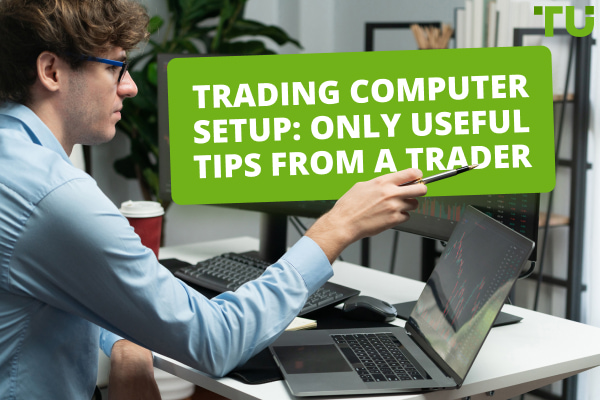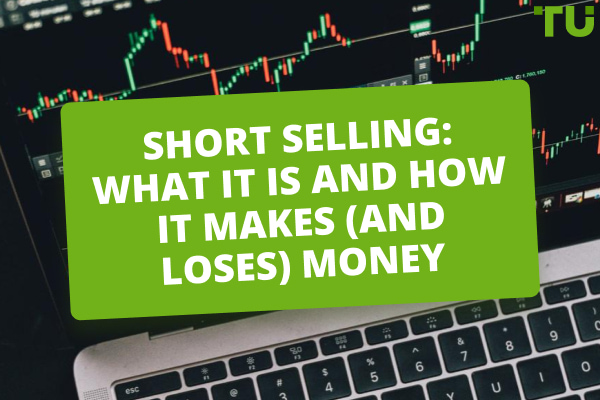Your Keys To Profitable Trading
A trading strategy is a set of rules that governs your trading activities. An effective strategy includes a system of monitoring and measuring your activities to allow you to adjust your rules to your evolving trading logic.
Ask any successful trader what the key to profitable trading is, and they will invariably tell you that you need to develop a profitable trading strategy. Ask them about their strategy, and they may look at you like you have a third eye on your forehead. A trading strategy to traders is like a restaurant's secret recipe for an award-winning chili. If everyone knew what it was, they would lose their edge. Or, so they think.
The fact is that all the ingredients for an award-winning chili are probably sitting in your pantry; you just need to know how to use them. The same goes for a trading strategy. Once you know what goes into one, you can adjust the recipe to suit your style, temperament, and risk tolerance. The key to profitability is to have a strategy and follow it religiously.
What Exactly is a Trading Strategy
A trading strategy is, in essence, a set of rules that governs your trading activities. Rules are important because they help you decouple your trading from your emotions, which can cause you to make some horrendous mistakes. An effective strategy includes a system of monitoring and measuring your activities to allow you to adjust your rules to your evolving trading logic.
It should be a "living" strategy that learns from your results while keeping you within the bounds of its rules. But you shouldn't mistake that for flexibility or as an opening for arbitrary decisions. Rules are rules, and if you can't follow them, you either need a new strategy or may not be cut out for trading.
Within the rule sets are the tactics that are applied when conducting your trading activities. Your entry and exit tactics are the most essential tactics in any trading strategy. Entering and exiting trades require strict adherence to your rules to minimize your losses and capture your profits.
Applying the rules using various order entry instructions, such as a limit order or a stop loss, is easy. Limit orders ensure you don't pay more for a position than your strategy requires. A stop-loss is used to exit a position automatically when it reaches your strategy's loss point.
Best Forex brokers

Money Management is Key to an Effective Strategy
For profit maximization, your exit tactics can be more important than your entry tactics. Each trade should have a probability set-up that dictates the amount of downside and upside movement allowed. Your exit point should be predetermined, and a stop-loss should be applied. Some strategies apply a stop loss at a 2% price decline. Others that follow a stricter risk management regimen might use 1%. The result could be a lot of stopped-out positions. But that also means that you've limited your losses.
Conversely, your upside limit might be set at 5%. While the temptation to let your profits run can be overwhelming, it is crucially important to follow your rules. One of the basic tenets of a profitable trading strategy is that it's not about any one trade. It's really about how you manage your money over a period of time. Profitability is measured from the results of a series of trades. For day traders, it's the cumulative profit position at the end of the session that matters. Whether you're a day trader, a swing trader, or a long-term trader (three-day to three-week trades), profitability is measured over time based on benchmarks you set for yourself in your trading plan.
You're not likely to maximize your profits over time unless you manage your cost assumptions. There are costs associated with each trade, such as commissions, fees, and slippage. Slippage is the amount you pay above your order price for long positions or below your price for short positions. In fast-moving markets, you can incur slippage even when using a limit order, as the price can jump through your limit price and the trade is executed at the next available price.
So, you must account for a certain amount of slippage in your cost assumptions. Traders with little regard for their cost assumptions may find it more difficult to attain profitability in a reasonable timeframe.
Match Your Strategy to the Market
Most trading strategies are specific to certain types of markets. If you plan to trade more than one type of market, such as Forex and stocks, you must ensure that your strategy employs rules that can adapt to those markets. That means understanding how your strategy's entry and exit rules apply, especially where limit and stop-loss orders are used.
Each market has its own application for trade orders, which may vary from one market to the next. Additionally, some strategies are based on volatility and volume parameters. A high-volatility strategy won't work well in a market with stable price movements.
Any trading strategy, whether you develop it on your own or purchase it, needs to be thoroughly tested. Backtesting a strategy by running its probability set-ups against historical trading periods and variable market conditions helps you gauge its reliability and provides an essential opportunity to train yourself on the strategy.
Before you launch your strategy, it's also recommended that you conduct a period of real-time, simulated trading to further your training and validate your rules and the probability set-up.
Team that worked on the article
Richard has over 30 years of experience in the financial services industry and has written extensively on a broad range of financial and investment topics. He is a contributor to many online publications, including Investopedia and Forbes, and his weekly personal finance columns appear on the websites of more than 100 community and regional banks. Richard has also edited or ghostwritten more than a dozen books.
Dr. BJ Johnson is a PhD in English Language and an editor with over 15 years of experience. He earned his degree in English Language in the U.S and the UK. In 2020, Dr. Johnson joined the Traders Union team. Since then, he has created over 100 exclusive articles and edited over 300 articles of other authors.
The topics he covers include trading signals, cryptocurrencies, Forex brokers, stock brokers, expert advisors, binary options. He has also worked on the ratings of brokers and many other materials.
Dr. BJ Johnson’s motto: It always seems impossible until it’s done. You can do it.
Mirjan Hipolito is a journalist and news editor at Traders Union. She is an expert crypto writer with five years of experience in the financial markets. Her specialties are daily market news, price predictions, and Initial Coin Offerings (ICO). Mirjan is a cryptocurrency and stock trader. This deep understanding of the finance sector allows her to create informative and engaging content that helps readers easily navigate the complexities of the crypto world.










